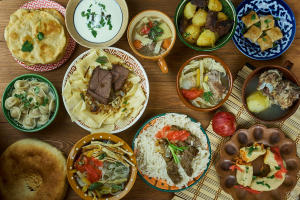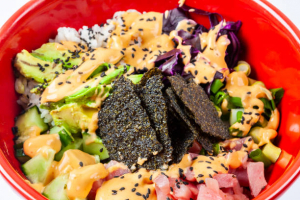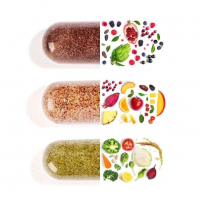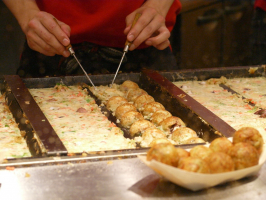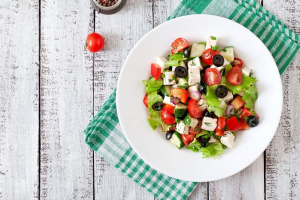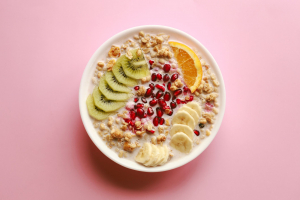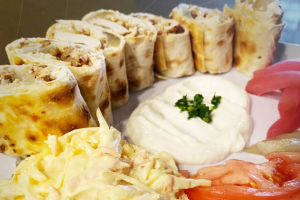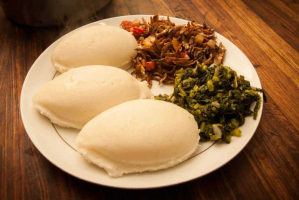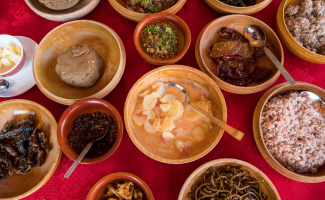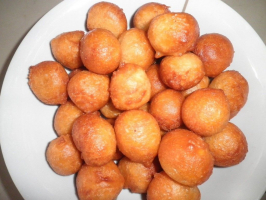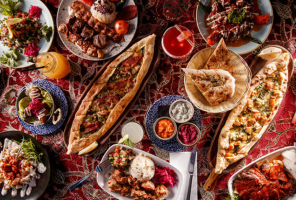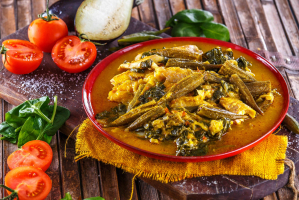Top 8 Best Libyan Foods
For each Libyan family, eating plays an important role in life. Libyans frequently advise people to eat healthily. In Libya, olive oil is an essential ... read more...component of almost every dish or meal, and it is nearly impossible to prepare a Libyan meal without it. The following are recipes for some of Libya's top 10 foods.
-
Asida is a type of boiling flour pudding that is prepared directly in water. It is a famous traditional meal prepared in Libya during holidays such as Eid. It is formed with wheat flour or whole-meal flour dough that has been boiled in water and is served with honey or date syrup and melted butter. Instead of butter, some individuals use olive oil or samn (ghee). It is typically consumed at breakfast. Asida, like bazeen, is a communal meal served on a big flat plate or gas'a, and it is typically eaten with the fingers, however, spoons can be used. While Bazeen is a uniquely North African cuisine with Amazigh origins, this boiled flour pudding has an Arabic name, and variations of Asida are cooked in the Arabian Peninsula.
Ingredients:
(Serves 4)
- 25g butter
- 1tsp salt
- 300g flour
- 1 litre boiling water
Instruction:
- Fill a deep pot with ½ litre of hot water. Add 25g butter and a teaspoon of salt. Then, leave on medium heat until the water starts to boil.
- Sift the flour then pour it into the pan all at once, then remove from heat. Next, immediately start to stir the flour into the buttery water and press the dough against the side of the pot to remove lumps.
- Once the dough is smooth, with the help of the wooden spoon form it into one lump. Put the pot back on the heat and add another half liter of boiling water.
- Use the wooden spoon to form some hollows in the dough. Do not cover and leave to cook on low heat until the water is absorbed. Midway during this process, turn the lump upside down.
- The dough’s cooking takes about 20 minutes. Then remove from heat. Immediately begin kneading, using a wooden spoon to smooth the asida. If you have a machine that will knead bread dough, then it will handle Asida fine.
- Melt about 75g of butter or samn (ghee). Brush a wide plate with butter.
- Place the asida in the center and begin folding in the edges to form a smooth dome.
- Once the edges are folded in, roll the asida to even out any cracks. Turn upside down and use a buttered ladle to form a hollow in the aside.
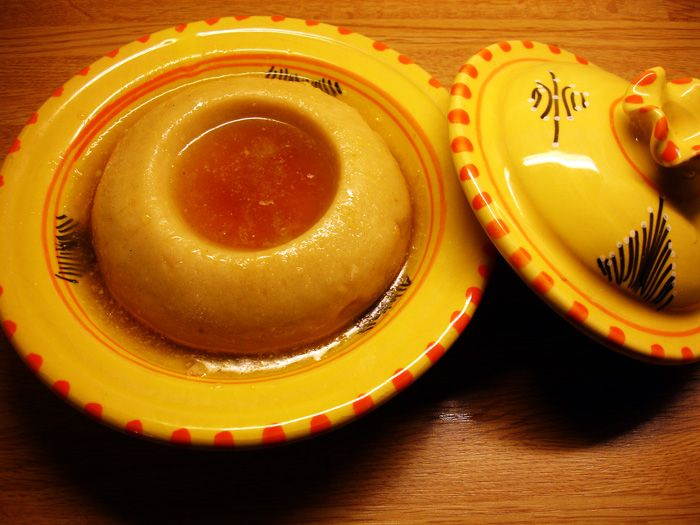
https://www.pinterest.com/pin/ 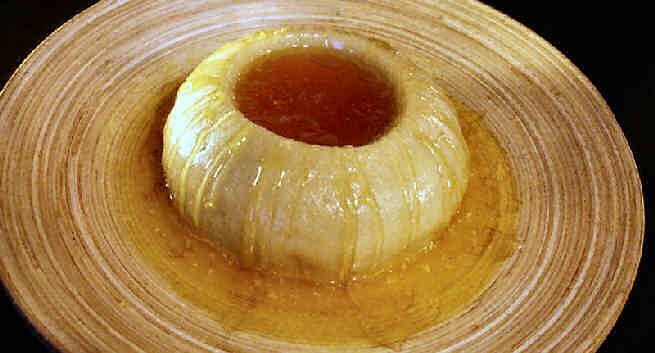
https://www.pinterest.com/pin/ -
Although stuffed cabbage and vine leaves are best cooked on the stove, Tajin Mahshi vegetables such as paprika, tomatoes, onions, courgettes, and aubergines are easier to prepare as a casserole. When stewed, the larger varieties of aubergines and courgettes become mushy. Tajin Mahshi normally serves as the main dish of a meal, however, stuffed vegetables are often served as a side dish for guests. Mahshi is a terrific make-ahead recipe since it tastes even better the second day and keeps nicely in the refrigerator. You can also prepare additional vegetables and stuffing and freeze them to make it easier to prepare the next time.
Ingredients:Serves 6
- Aubergines, Courgettes, Firm Tomatoes, Small paprika Peppers
- 500g finely chopped lamb (or substitute minced meat)
- 1 cup finely chopped large onion1cup finely chopped tomato
- 2 cups finely chopped parsley
- 2 cups short-grain rice, pre-soaked for 10 minutes and drained
- 2 tablespoon tomato paste1-2 finely chopped chillies (optional)
- 2 pieces chopped spring onions (optional)
- 1/2 cup olive oil
- 2 tsp salt
- 1 tsp of each, black pepper, turmeric, ginger, cinnamon
- 1 tablespoon olive oil1teaspoon tomato past1cup boiling water
- 1 tsp of each salt, black pepper, ginger, turmeric, cinnamon
Instruction:
- The courgettes and aubergines use the pointed end of a vegetable peeler to hollow out a segment, then hold the peeler in place and rotate the vegetable until you have scraped away almost all the flesh. Remove the tomato pulp with a teaspoon, dice the pulp and add it to the stuffing mix.
- Mix all the ingredients for the filling, stuff the vegetables leaving space for the rice to expand (fill to about 3/4). Place the vegetables in an oven-proof dish (one layer only). Line the pot with parsley stems or potato slices before placing the stuffed vegetables in it.
- Mix and spoon the cooking liquid over the vegetables, cover with foil and place in the middle of the oven at 250°C for about one hour. Remove the foil and cook for further 15 minutes (until all liquid is absorbed and the Mahshi is slightly browned).
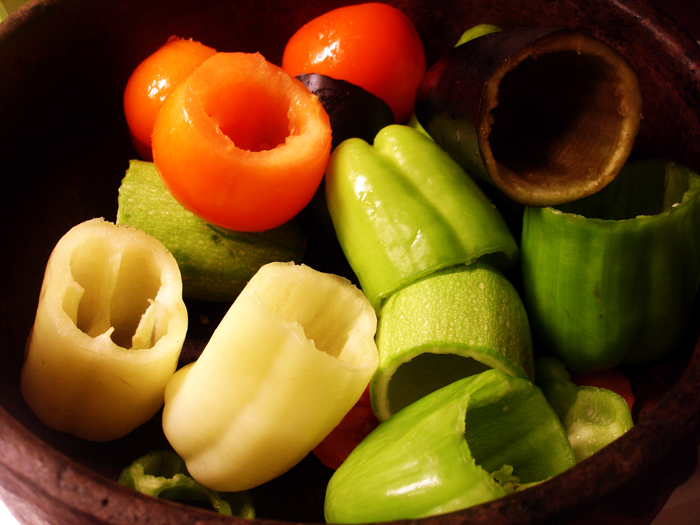
https://libyanfood.blogspot.com 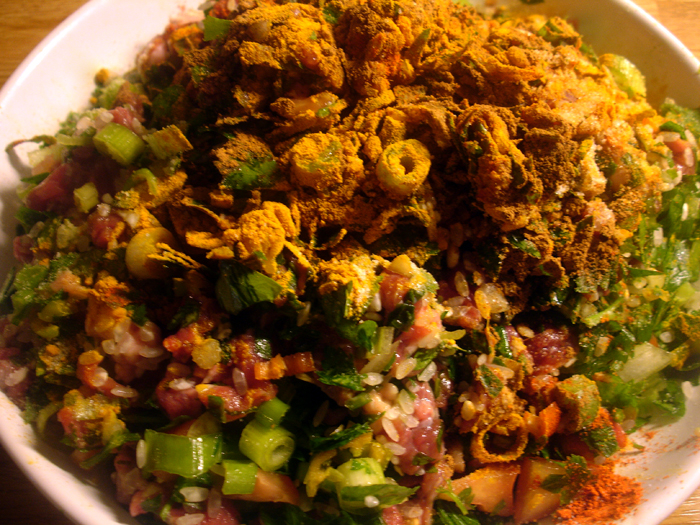
https://libyanfood.blogspot.com/ -
Basbousa bil tamr is a traditional Arabian semolina cake studded with almonds and soaked in syrup. This Libyan version contains desiccated coconut in the cake recipe as well as date paste sandwiched between two layers of semolina cake. Semolina, normal flour, desiccated coconut, sugar, butter, milk, date paste, and baking powder are all used to make this cake. Cinnamon is often used to flavor it. Libyans eat Basbousa with qashta cream and a side of Arabic cardamom coffee.
Ingredients:
- 2 cups semolina
- 1 cup plain flour
- 1 cup dessicated coconut
- 1 cup sugar (or 1/2 cup if you want it less sweet)
- 1 cup melted butter
- 1 cup milk
- 1tbsp baking powder
- 1 tbsp cinnamon
- 500g date-paste cut into thin slices
- 1 cup blanched almonds
- Syrup 5 cups boiling water
- 3 cups sugar
- 2 tbsp lemon juice
- 2 tbsp thick honey (optional)
Instruction:
- Prepare the syrup, by adding all the ingredients together, bring to a boil, cook on low heat until reduced to half the amount.
- Remove from heat and set aside to cool.
- Mix all the liquid ingredients then add to the dry ingredients.
- Mix well Brush a rectangle 20x30 ovenproof dish, and spread half the basbousa mix.
- Arrange date paste slices on top carefully, then add the remaining basbousa mix and spread.
- With a sharp knife mark 12 equal squares into the top layer of semolian, decorate each with halved almonds.
- Bake in a preheated oven, 200°C degrees until golden in colour.
- Pass a knife over the squares again, deepening the lines.
- Add the cold syrup while the basbousa is still warm.
- Leave to rest before cutting and serving.
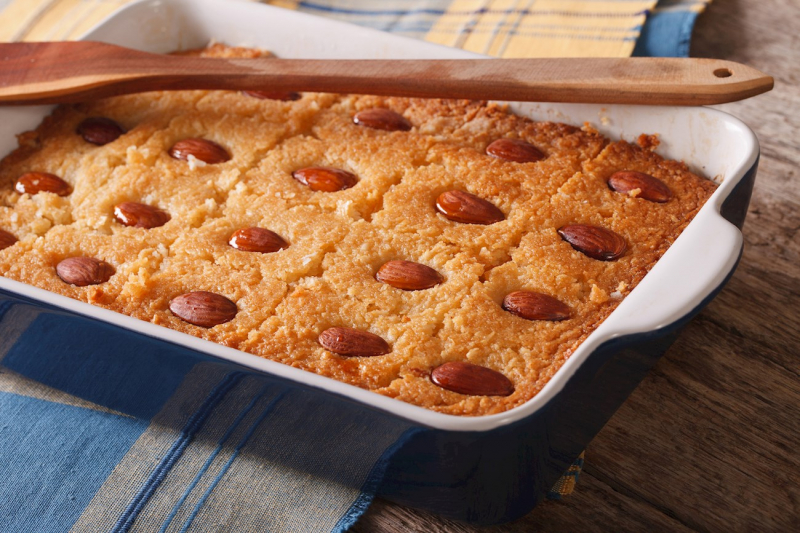
https://www.tasteatlas.com/basbousa-bil-tamr 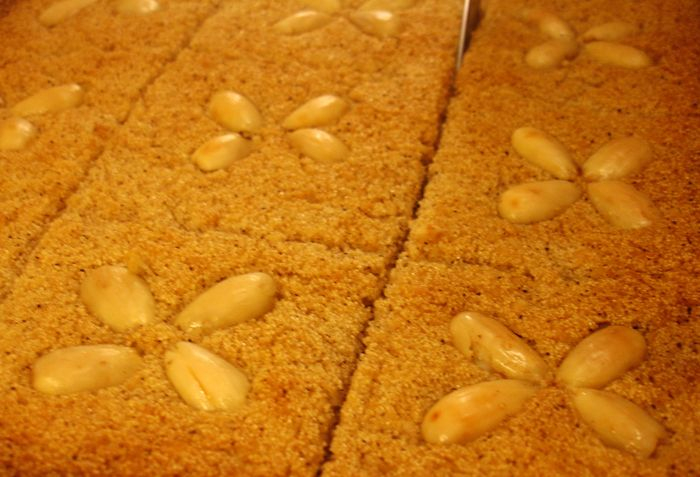
https://www.tasteatlas.com/basbousa-bil-tamr -
Shakshouka is a delectable dish of poached eggs in a spicy tomato sauce. Despite its strange name, the meal is simple to prepare. It's often made in a skillet with onions, tomatoes, and spices heated together until they make a lovely tomato sauce. After that, the eggs are poached in the tomato sauce until done. The meal can also be enhanced with Merguez sausage. Shakshouka is thought to have originated in Tunisia, although it is now popular throughout North Africa and the Middle East.
Ingredients:
- 3 jalapeños stemmed, seeded, and finely chopped
- 1 small yellow onion chopped
- 6 cloves garlic crushed
- 1 tsp. ground cumin
- 1 tbsp. paprika
- 1 28-oz. can whole peeled tomatoes, undrained
- 8 eggs
- 1 ⁄2 cup crumbled feta cheese
- 1 tbsp. chopped flat-leaf parsley
- Warm Libyan bread Khubitz howsh for serving
- 1 ⁄4 cup extra-virgin olive oil
- Salt to taste
Instruction:
- Heat oil in a 12" skillet over medium-high heat.
- Add chilies and onions and cook, stirring occasionally, until soft and golden brown, about 6 minutes.
- Add garlic, cumin, and paprika, and cook, stirring frequently, until garlic is soft, about 2 more minutes.
- Put tomatoes and their liquid into a medium bowl and crush with your hands or a wooden spoon.
- Add crushed tomatoes and their liquid to skillet along with 1⁄2 cup water, reduce heat to medium, and simmer, stirring occasionally, until thickened slightly about 20 minutes.
- Season sauce with salt.
- Crack eggs over sauce so that eggs are evenly distributed across the sauce's surface.
- Cover skillet and cook until yolks are just set for about 5 minutes.
- Using a spoon, baste the whites of the eggs with tomato mixture, being careful not to disturb the yolk.
- Sprinkle Shakshuka with feta and parsley and serve with Libyan bread, for dipping.
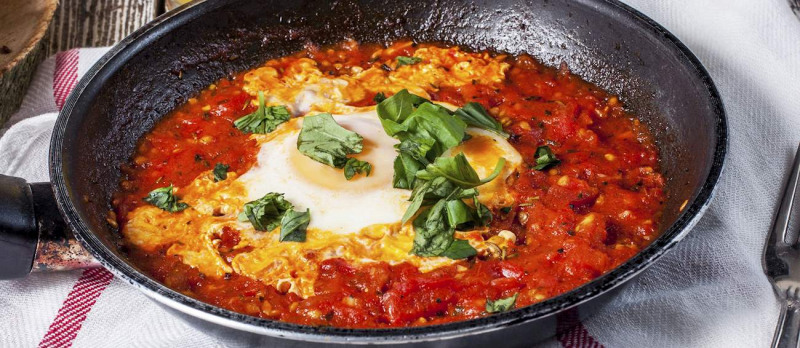
https://www.tasteatlas.com/shakshouka-libya 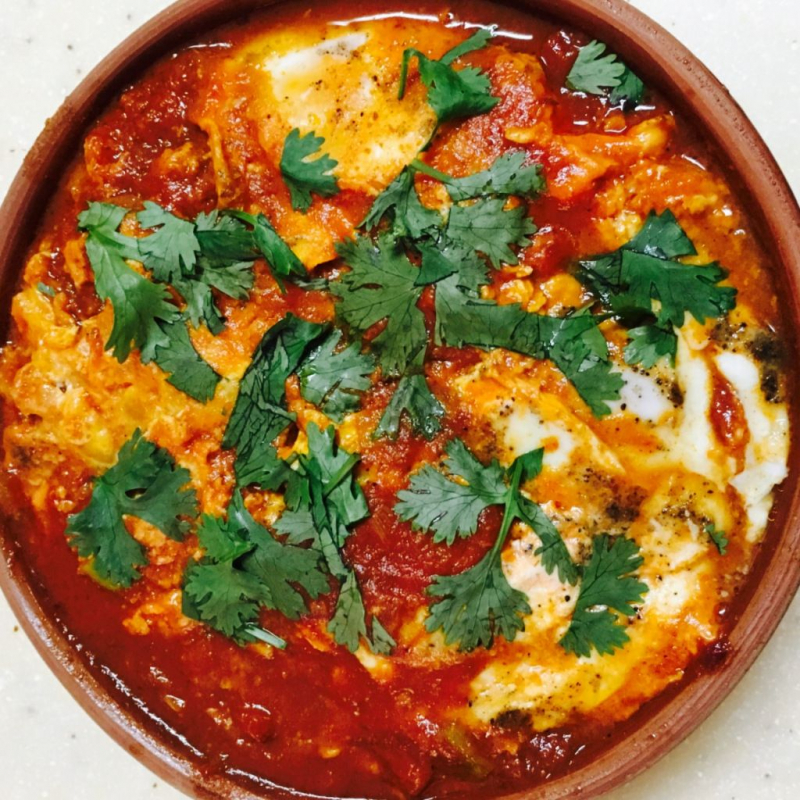
https://www.tasteatlas.com/shakshouka-libya -
Hasaadas is a healthful Lybian soup that is also vegetarian-friendly. It is often cooked with lentils, carrots, onions, and tomatoes and has a thick consistency. Traditionally, the soup is seasoned with garlic and cumin. When finished, hasa adas is topped with crispy and sweet caramelized onions or toasted bread slices. When cooked with dried meat, the soup is often poured over toasted Arabic bread and is known as fattat adas. It is typically served as a warming winter dish.
Ingredients:
- 2 cups orange lentils (washed and drained)
- 5 cups water
- 2 garlic cloves
- 1 medium carrot, chopped
- 1 chopped onion
- 1 chopped tomatoes
- 1/2 – 1 tablespoon cumin
- 1 tablespoon salt
Instruction:
- Fried Onions: 2 medium onions, chopped into wingsoil for frying
- For ToppingExtra cuminToasted or fried bread (cut into cubes, or triangles for flatbread)
- Wash and drain lentils, wash and cut the carrot, chop tomatoes and onion.
- Put the onion, tomatoes, carrot, lentils, garlic cloves, salt and cumin in a pot.
- Add about 5 cups of boiling water. Cook, until the lentils become mushy.
- Leave to cool, puree, add boiling water to desired thickness, stir well.
- Chop 2 onions into thin wings, fry in a little olive oil or butter, stirring constantly until dark brown.
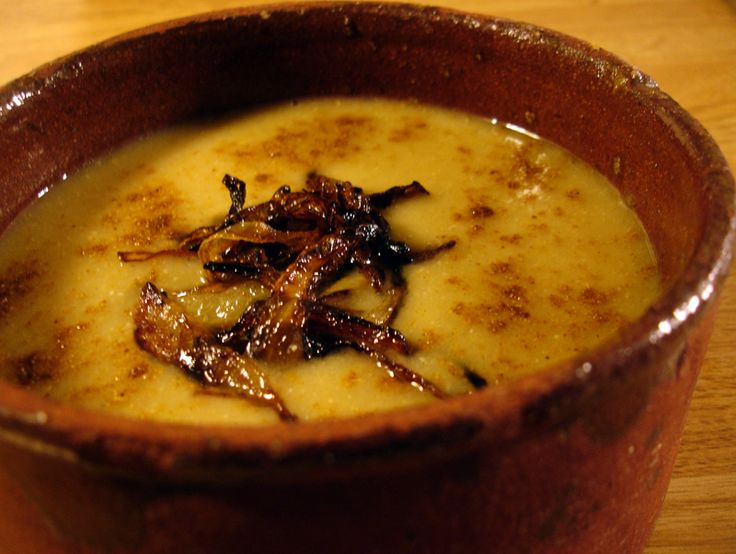
https://www.tasteatlas.com/hasa-adas 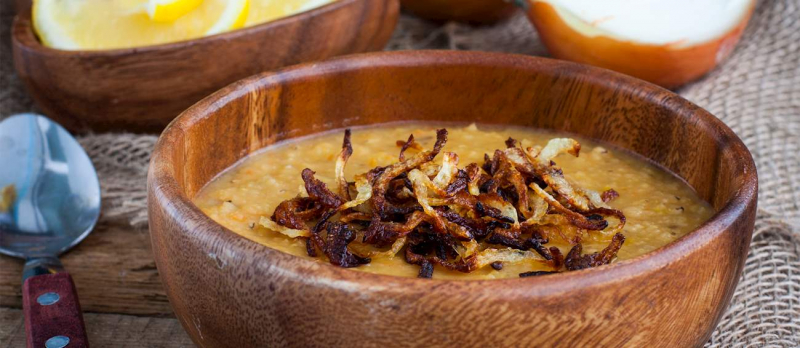
https://www.tasteatlas.com/hasa-adas -
Ruz owl bil kusbur is a fragrant Libyan dish made of rice cooked in a fish headstock. It's flavoured with parsley, chilli peppers, garlic, ginger, cumin, paprika, and black pepper, as well as oil, roasted coriander seeds, onions, tomatoes, and celery. Although the rice is sometimes served with bread, the dish is generally served with grilled, baked, or fried white fish fillets seasoned in garlic, cumin, spicy peppers, and lemon juice. It is suggested that you serve the dish with haraymi sauce and lemon wedges on the side to elevate it even further.
Ingredients:
Serves 4-6
- 3 cups short-grain rice washed and well-drained
- 6 cups hot fish stock (or 2 fish stock cubes dissolved in 6 cups hot water )
- 5 tb spoons corn oil
- 1/2 cup finely chopped celery, 1/2 cup finely chopped parsley
- 1/2 cup finely chopped onion, 1/2 cup finely chopped tomatoes
- 1 finely chopped chili peppers
- 2-3 garlic cloves, grated
- 1 tablespoon grated ginger root
- 1-2 tablespoons pan-roasted coriander seeds
- 1 teaspoon of each, cumin, black pepper, paprika
- 2 tablespoons salt Libyan Cumin and Garlic Marinated Fried Fish
- 6 White fish fillets (any kind) vegetable oil for deep frying
- 3-4 garlic cloves, finely grated
- 1 tablespoon cumin
- 1 finely chopped chilli pepper (optional)
- Salt and Pepper
- Juice of half a lemon for fish coating
- 5 tb spoon white flour, 5 tb spoons fine breadcrumbs, 2-3 tb spoons water
- 2 eggs
Instruction:
- Combine all the ingredients for the marinade, put in a food processor until it becomes a smooth paste, coat the fillets and set aside while you start cooking the rice.
- Put the oil in a thick based pot, add the chopped ingredients, stir for a few minutes, and leave to cook on low heat until the onion softens.
- Meanwhile roast the coriander in a frying pan, preferably just before adding. Some like to grind them first, but whole coriander seeds give a nutty texture to the dish.
- Add the rice, the remaining spices, stir well and add the fish stock (or crumble stock cubes and add hot water). The stock should be about 2 fingers above the level of the rice. Leave on moderate heat until evaporated to just above the level of the rice, stir well, cover and leave on low heat for approx. (half an hour)
- Meanwhile, start frying the fish. Whisk the egg with 3tbspoon water, dip each fillet first in the egg mix, then coat both sides with flour and breadcrumbs mix, then deep fry in batches until golden in colour, place on kitchen towel to absorb excess oil.
- Put the rice on a serving plate, top with the fish fillets. Serve with haraymi sauce and lemon wedges
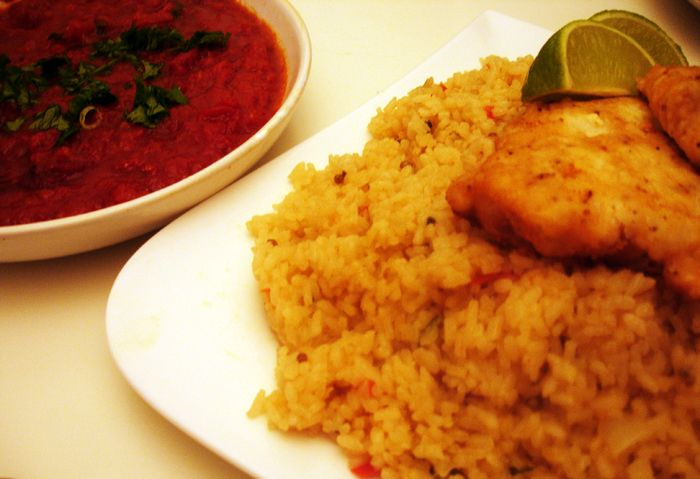
https://www.pinterest.com/ 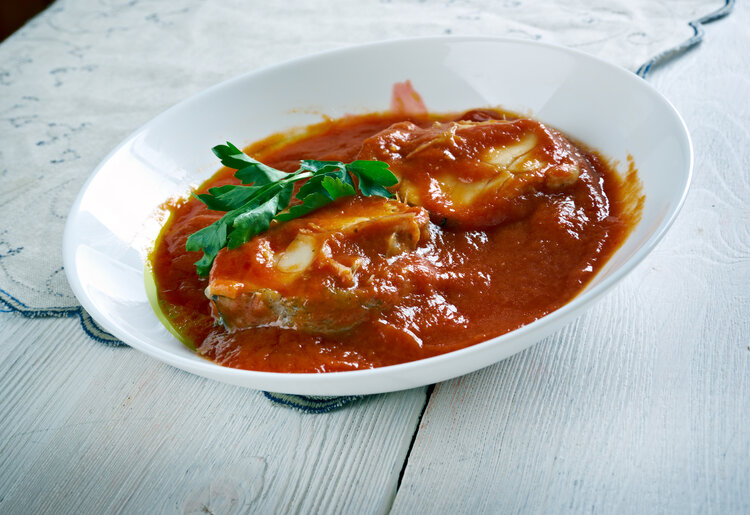
https://libyanheritagehouse.org/ -
Ghoriba is a circular, shortbread cookie prepared of flour, sugar, butter, and almonds. It is frequently accompanied by traditional Arabic coffee or Maghreb mint tea. Ghoriba, often spelt Ghurayba, has been served for hundreds of years in Libya, as well as Greater Syria, Iraq, and other Arab countries. Some recipes instruct you to rest the dough for several hours or overnight before kneading in single-acting baking powder shortly before shaping and baking. This recipe does not call for resting, but the dough must be mixed well by hand or with a stand mixer to obtain the desired consistency.
Ghoriba were traditionally baked on a shaped baking sheet, resulting in cookies with a concave bottom. However, many home bakers nowadays use a standard baking sheet instead. The particular pan can be seen in the photo lesson.Ingredients:
- 2/3 cup sugar1/2 cup (4 ounces) unsalted butter, softened
- 1/2 cup vegetable oil
- 1/4 cup sesame seeds, unhulled
- 1/4 cup almonds
- 2 to 3 teaspoons vanilla sugar
- 1 pinch salt
- 4 cups all-purpose flour
- 1,5 teaspoons baking powder
Instruction:- Toast the sesame by spreading the seeds in a single layer and baking in a 400 F / 200 C oven for about 10 minutes; let cool. Blanch and fry the almonds, then grind coarsely.
- Combine the sugar, butter, and oil in a large bowl.
- Mix in the sesame seeds, almonds, and vanilla sugar. Mix in about half of the flour and the baking powder. When combined, use your hands to work in enough of the remaining flour to make a dry, crumbly mixture.
- Use a stand mixer and paddle attachment to mix the dough on the lowest speed for 10 minutes, or knead by hand for 20 minutes, to make a dough that clumps together but is not so moist as to form one uniform mass. If the dough seems to be too moist, add a little flour. Conversely, if the dough remains too dry and crumbly to pack into a ball easily, then add a tablespoon or two of oil. In either case, allow ample mixing time to blend any additions fully throughout the dough.
- Preheat your oven to 338 F / 170 C. If you don't have a special ghoriba mold, line a regular baking sheet with parchment paper. There is no need to grease the ghoriba mold.
- Take a portion of dough and squeeze it in your hand to compress and mold it. Shape it into a 1 1/2-inch (3.5 centimeter) ball, then flatten it in your palm to a smooth disc shape. Correct any cracked edges.
- Gently press the cookie onto the molded pan or place it on your prepared pan. Repeat with the remaining dough.
- Plan to bake in batches. Place the baking rack to its lowest position and turn on the broiler. Bake the cookies for 5 or 6 minutes, then turn off the broiler and move the cookies to the upper third of the oven. Continue baking for another 15 minutes, or until the cookies are lightly colored with crackled tops.
- Remove from the oven and allow the cookies to cool a few minutes on the pan. Transfer them to a rack to cool completely before storing them in an airtight container with waxed paper or plastic between layers.
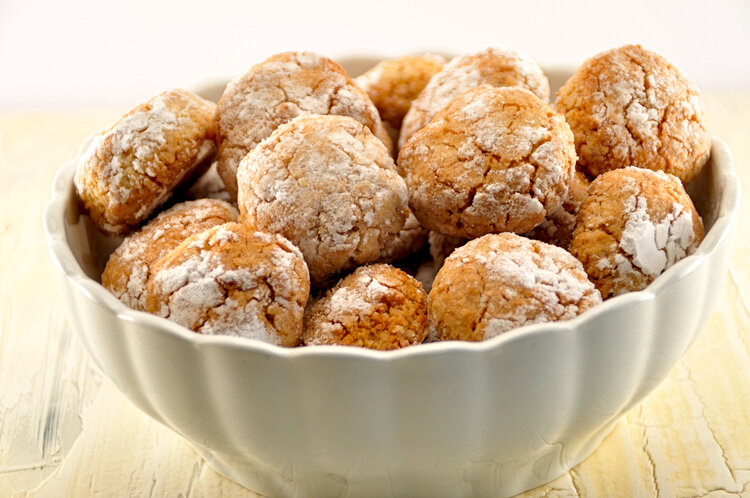
https://www.thespruceeats.com/ 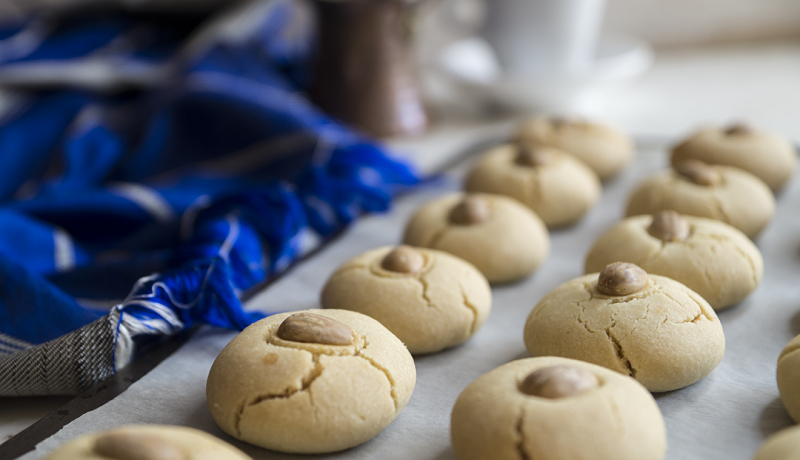
https://lubnabenhalim.ly/ -
The king of all Libyan sweets or desserts is Magrood, which is prepared from Semolina, dates, syrup, and honey. If you are a coffee fanatic, Magrood will make it even more luxurious for you. There are numerous ways to prepare Magrood, however the traditional method contains no measurements. Yes, they keep adding this and that until they have a dough that can be held in their hands. However, there is a fixed measurement resulting in a 95 percent fixed formula, but a step or two must be done while mixing and cannot be 100% measured!
Ingredients:
Dough
- 3 cups semolina
- 1 cup flour
- ½ tsp. ammonium chloride
- 1 cup olive oil
- 1/3 cup vegetable oil
- ¾ cup Geranium water
- ¾ cup water
Date filling
- 150g date chopped
- 1 Tbsp. olive oil
- 1 Tbsp. sesame
- 1 tsp. cinnamon
- Honey syrup
- 2 cups thick sugar syrup
- 1 cup pure honey
Instruction:
1.Dough
- Mix together dry ingredients (semolina, flour and ammonium chloride) then add olive oil and mix till well combined, add half the amount of vegetable oil and mix, grab some of the dough your hands and throw it up a few times and see if it forms a ball or not, if it is still crumbly they add more oil till you get it to form a ball.
- Cover with plastic wrap and leave to rest overnight. The next day, mix water and Geranium water in a jug, start adding it to the dough gradually and knead it till you get a soft playable dosugh.
2.Date filling- Put dates, oil, sesame and cinnamon in a saucepan over medium heat and stir using a wooden spoon till the dates start to soften and all well combined to form a date paste or a dough.
- Set aside and let it cool down then roll it out to ½ cm thick.
3.Final
- Pre-heat the oven to 160C, rack in the middle.
- Take some of the magrood dough and roll it out to 2.5 cm thick, make a hole along with it but don’t reach the bottom, put the date in it and close it well, now roll the whole thing a few times to make sure it securely closed and the date got into the center.
- Cut it about 2 fingers in thickness and start decorating them.
- Bake the magrood till golden brown.
- While the magrood is in the oven, mix both honey and sugar syrup in a deep saucepan and bring to boil, once the magrood is ready pour the honey on it while both are super hot, add the sprinkle and leave it in the honey oven night.
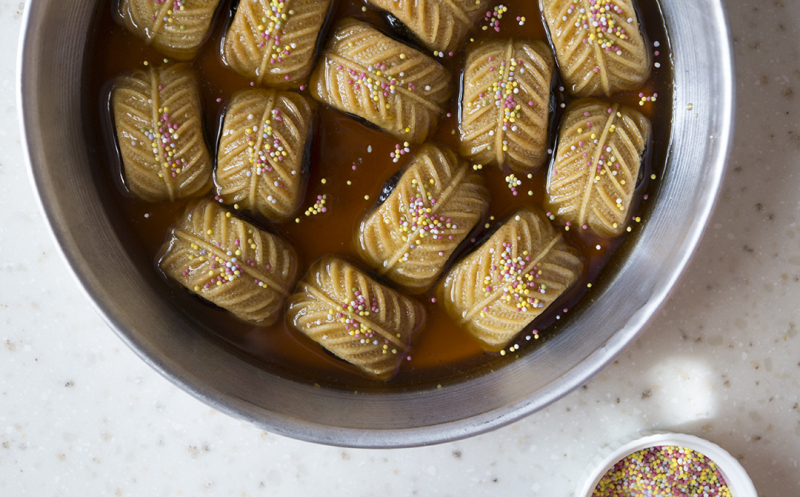
https://lubnabenhalim.ly/magrood/ 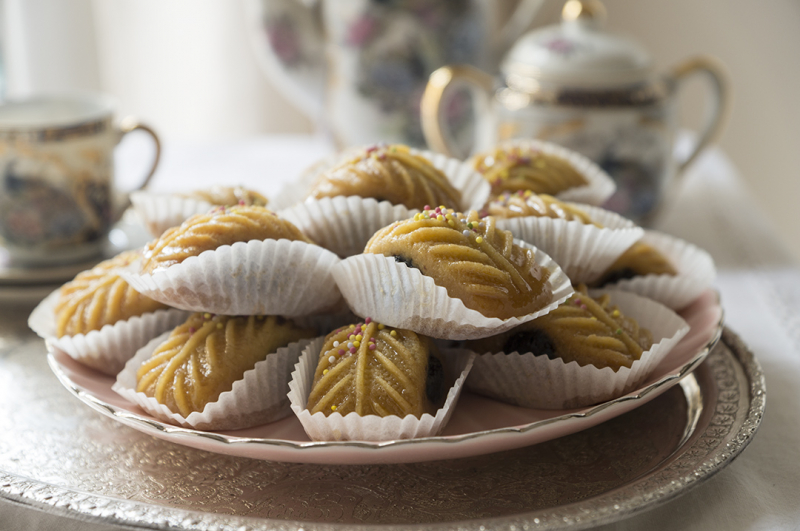
https://lubnabenhalim.ly/magrood/




